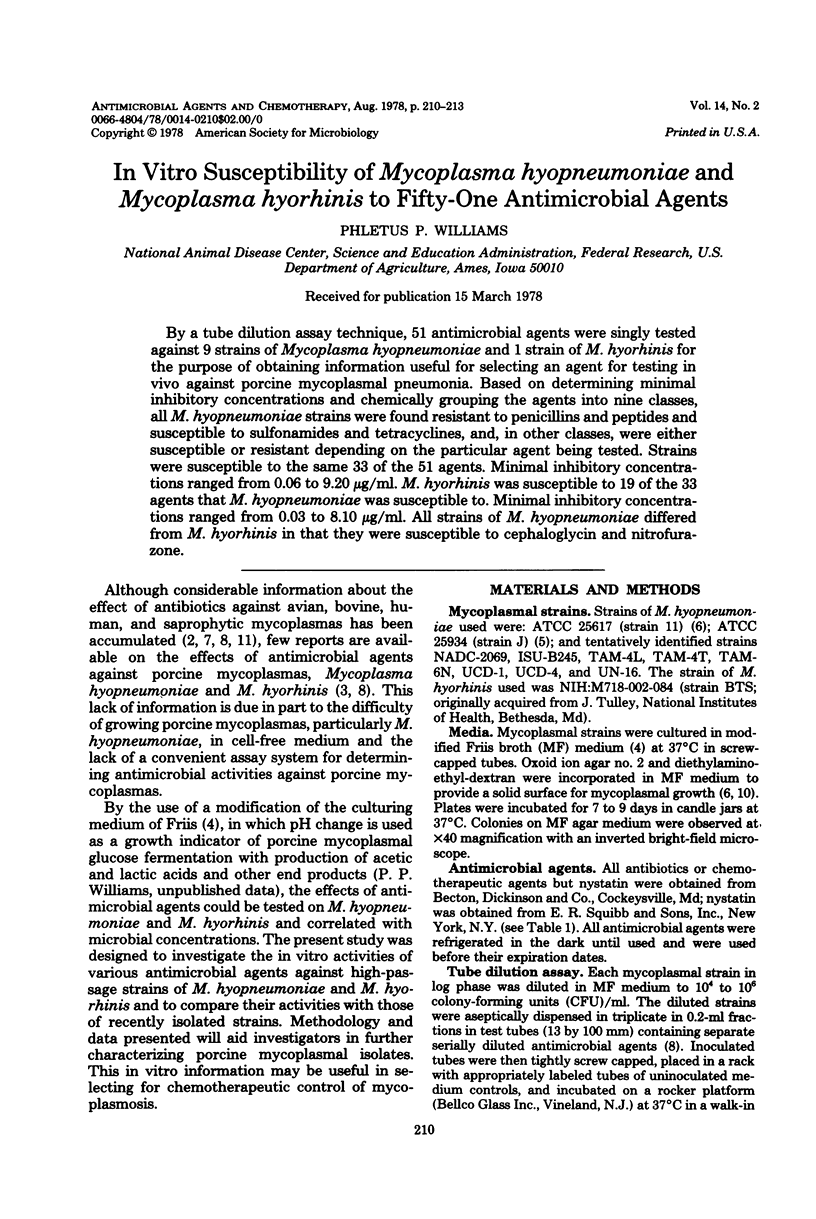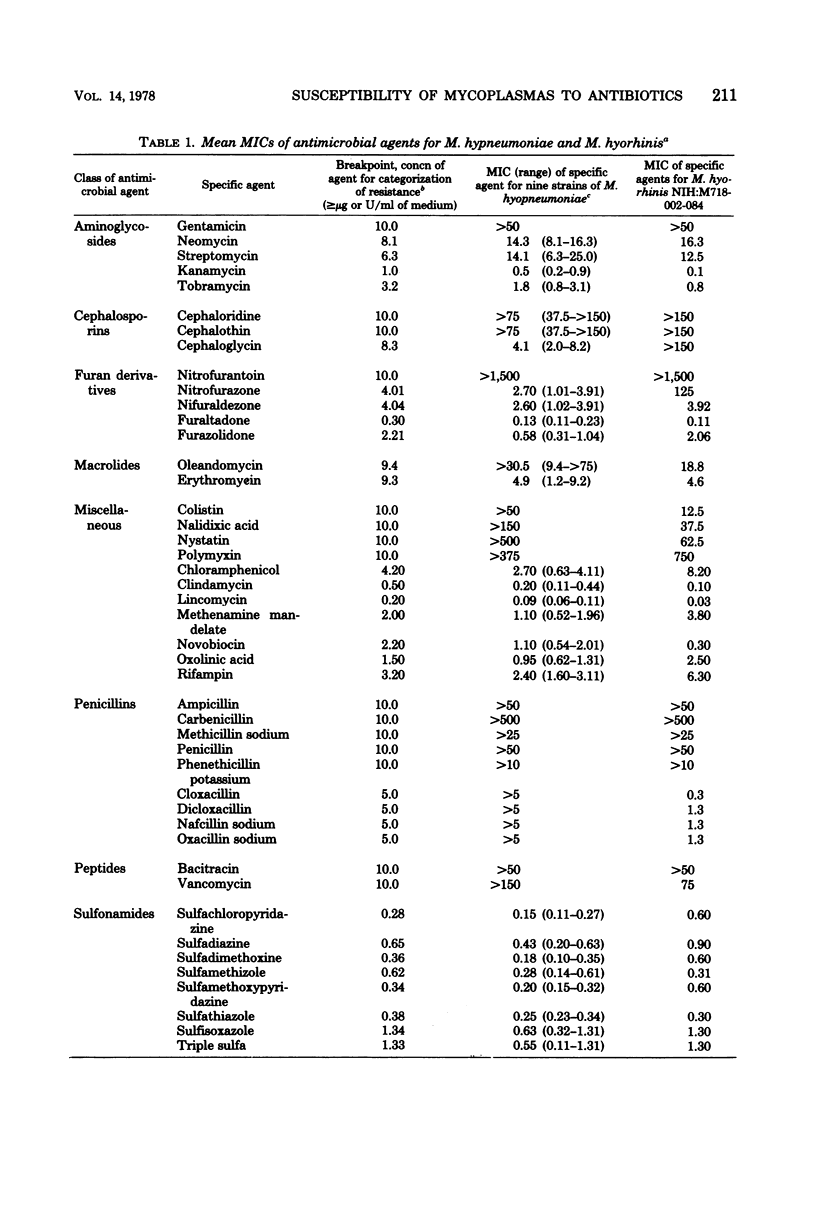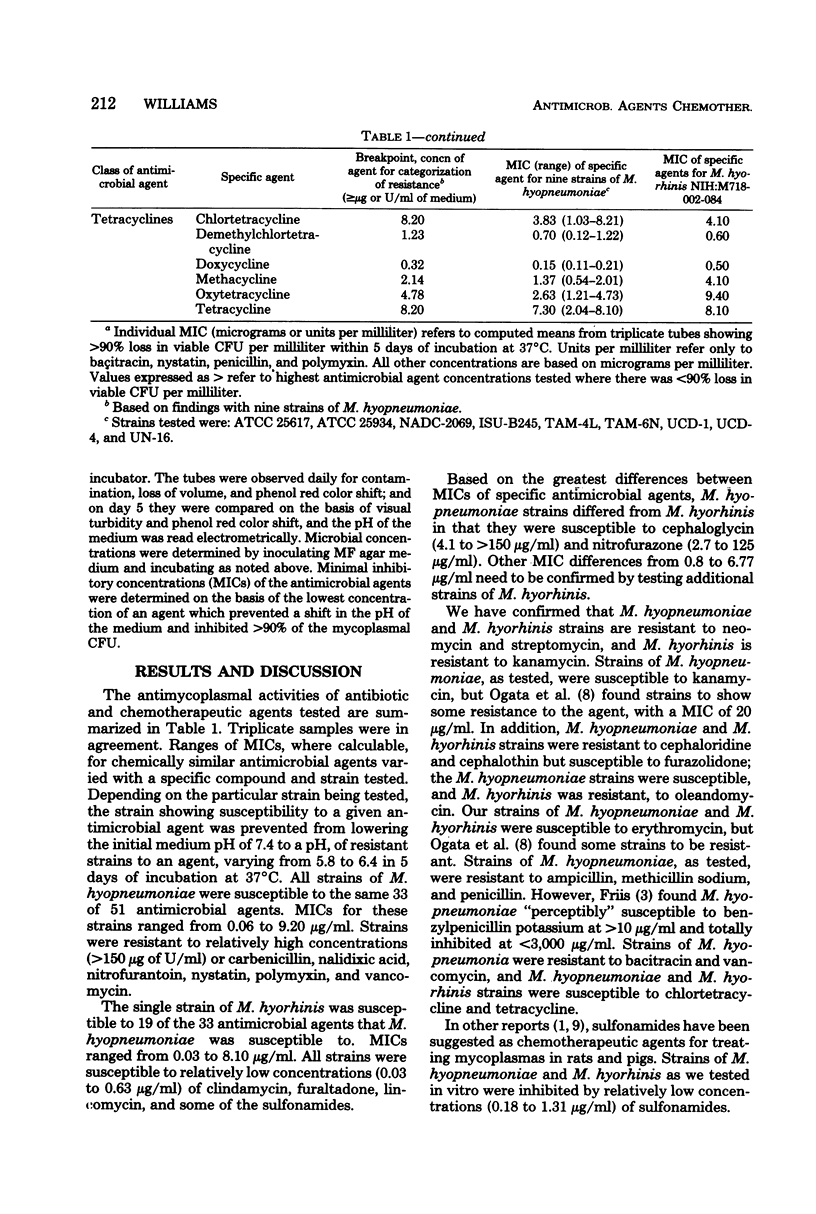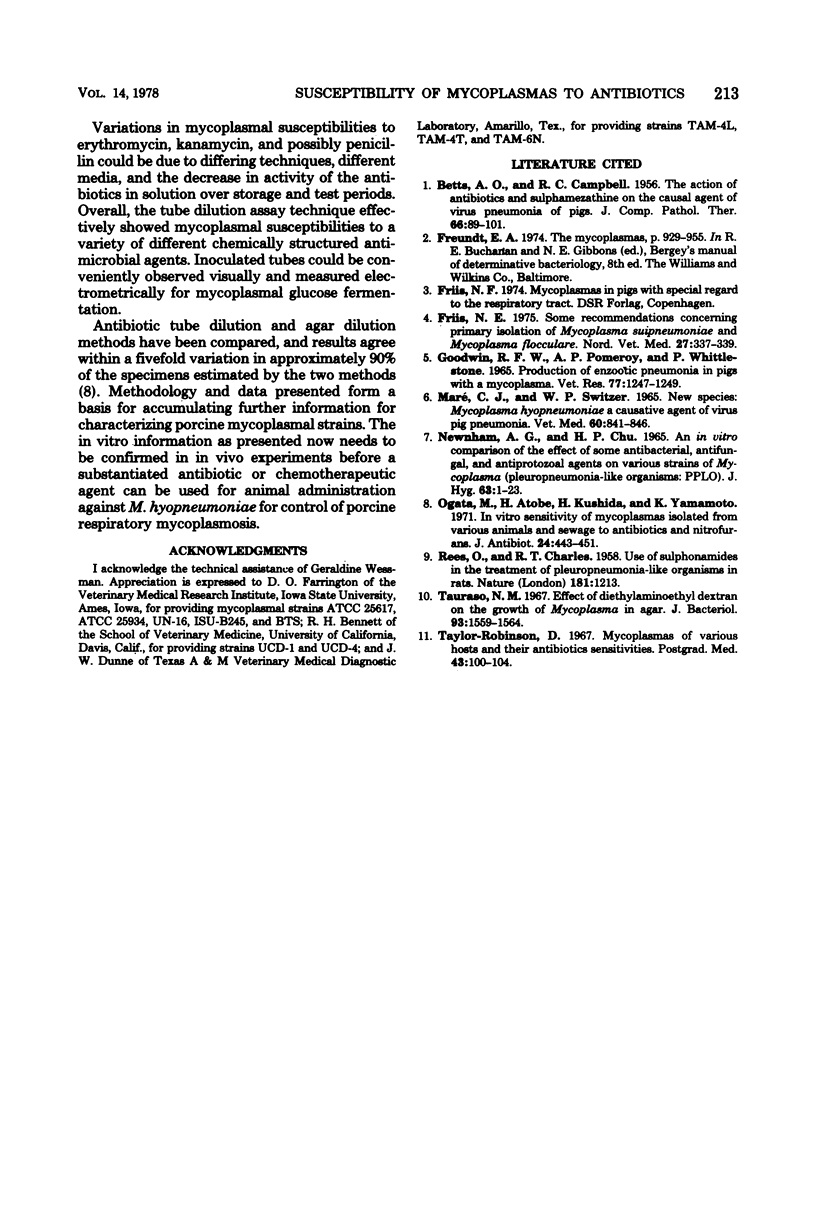Abstract
By a tube dilution assay technique, 51 antimicrobial agents were singly tested against 9 strains of Mycoplasma hyopneumoniae and 1 strain of M. hyorhinis for the purpose of obtaining information useful for selecting an agent for testing in vivo against porcine mycoplasmal pneumonia. Based on determining minimal inhibitory concentrations and chemically grouping the agents into nine classes, all M. hyopneumoniae strains were found resistant to penicillins and peptides and susceptible to sulfonamides and tetracyclines, and, in other classes, were either susceptible or resistant depending on the particular agent being tested. Strains were susceptible to the same 33 of the 51 agents. Minimal inhibitory concentrations ranged from 0.06 to 9.20 μg/ml. M. hyorhinis was susceptible to 19 of the 33 agents that M. hyopneumoniae was susceptible to. Minimal inhibitory concentrations ranged from 0.03 to 8.10 μg/ml. All strains of M. hyopneumoniae differed from M. hyorhinis in that they were susceptible to cephaloglycin and nitrofurazone.
Full text
PDF



Selected References
These references are in PubMed. This may not be the complete list of references from this article.
- BETTS A. O., CAMPBELL R. C. The action of antibiotics and sulphamezathine on the causal agent of virus pneumonia of pigs. J Comp Pathol. 1956 Apr;66(2):89–101. doi: 10.1016/s0368-1742(56)80010-6. [DOI] [PubMed] [Google Scholar]
- CHARLES R. T., REES O. Use of sulphonamides in the treatment of pleuro-pneumonia-like organisms in rats. Nature. 1958 Apr 26;181(4617):1213–1213. doi: 10.1038/1811213a0. [DOI] [PubMed] [Google Scholar]
- Friis N. F. Some recommendations concerning primary isolation of Mycoplasma suipneumoniae and Mycoplasma flocculare a survey. Nord Vet Med. 1975 Jun;27(6):337–339. [PubMed] [Google Scholar]
- MARE C. J., SWITZER W. P. NEW SPECIES: MYCOPLASMA HYOPNEUMONIAE; A CAUSATIVE AGENT OF VIRUS PIG PNEUMONIA. Vet Med Small Anim Clin. 1965 Aug;60:841–846. [PubMed] [Google Scholar]
- NEWNHAM A. G., CHU H. P. AN IN VITRO COMPARISON OF THE EFFECT OF SOME ANTIBACTERIAL, ANTIFUNGAL AND ANTIPROTOZOAL AGENTS ON VARIOUS STRAINS OF MYCOPLASMA (PLEUROPNEUMONIA-LIKE ORGANISMS: P.P.L.O.). J Hyg (Lond) 1965 Mar;63:1–23. doi: 10.1017/s0022172400044922. [DOI] [PMC free article] [PubMed] [Google Scholar]
- Ogata M., Atobe H., Kushida H., Yamamoto K. In vitro sensitivity of mycoplasmas isolated from various animals and sewage to antibiotics and nitrofurans. J Antibiot (Tokyo) 1971 Jul;24(7):443–451. doi: 10.7164/antibiotics.24.443. [DOI] [PubMed] [Google Scholar]
- Tauraso N. M. Effect of diethylaminoethyl dextran on the growth of Mycoplasma in agar. J Bacteriol. 1967 May;93(5):1559–1564. doi: 10.1128/jb.93.5.1559-1564.1967. [DOI] [PMC free article] [PubMed] [Google Scholar]
- Taylor-Robinson D. Mycoplasmas of various hosts and their antibiotic sensitivities. Postgrad Med J. 1967 Mar;43(Suppl):100–104. [PubMed] [Google Scholar]


